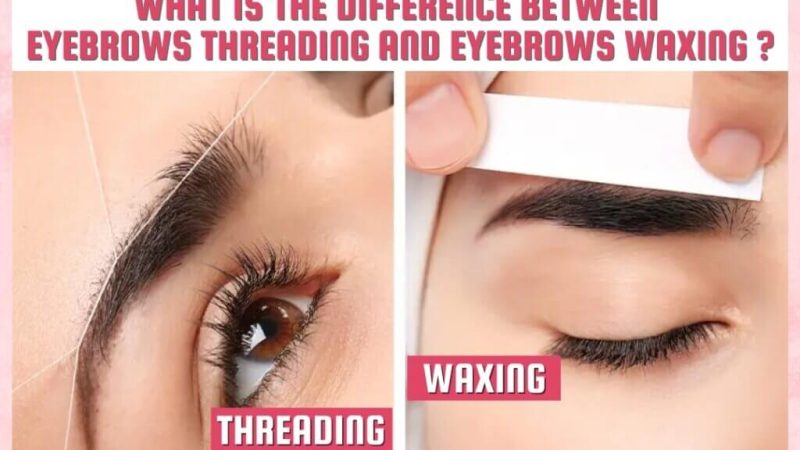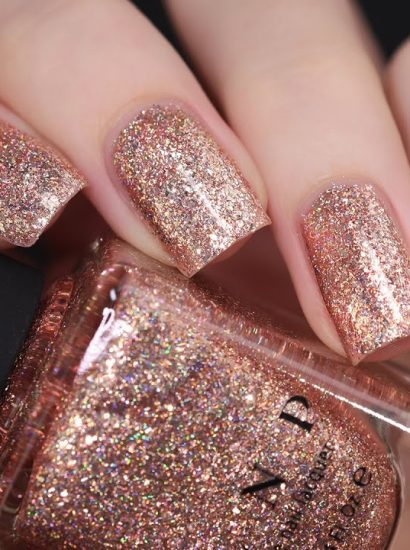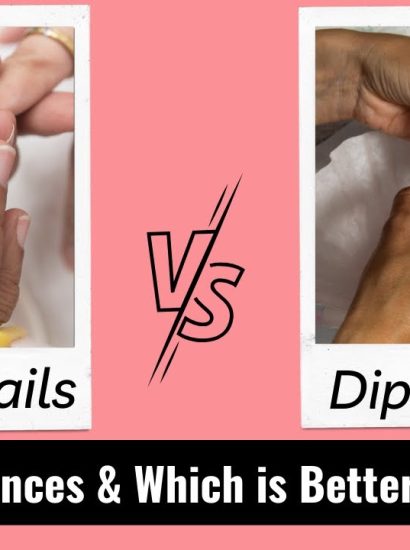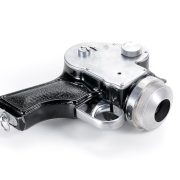Perfect eyebrows can completely transform your face — highlighting your eyes, balancing your features, and adding symmetry to your overall look. But when it comes to shaping them, many people get stuck choosing between waxing vs threading eyebrows.
Both methods are popular, but they offer very different experiences in terms of precision, pain level, and results. Whether you’re after quick maintenance or meticulous detailing, understanding the difference between these two techniques will help you pick the right one.
Let’s break down the top 10 differences to see which option — waxing or threading — is best for you.
What Is Eyebrow Waxing?
Eyebrow waxing involves applying a thin layer of warm or cold wax to unwanted hair, pressing a strip onto it, and swiftly pulling it off to remove multiple hairs at once. It’s a quick and effective way to clean up and define your brows.
Benefits:
- Fast process — perfect for busy schedules.
- Removes fine and coarse hair efficiently.
- Results last for several weeks.
Drawbacks:
- Can cause irritation, especially on sensitive skin.
- Hot wax can sometimes burn the skin if not used carefully.
- Not ideal for very thin or sparse brows.
Waxing is often chosen by those who want sharp, defined results with minimal time in the chair.
What Is Eyebrow Threading?
Threading is a centuries-old technique that uses a twisted cotton thread to pluck hair from the root. The thread is rolled along the skin, catching unwanted hairs line by line.
Benefits:
- Extremely precise for shaping and defining brows.
- 100% chemical-free and suitable for sensitive skin.
- Can remove even the tiniest hairs that wax may miss.
Drawbacks:
- Slightly slower than waxing.
- Requires a skilled professional for best results.
When comparing waxing vs threading eyebrows, threading often wins in precision. It’s ideal for detailed shaping and perfect arches.
Which Is More Painful?
Let’s be honest — both waxing and threading involve pulling hair from the root, so a bit of discomfort is inevitable. The difference lies in how the pain is experienced.
Waxing gives a sharp, instant sting that fades quickly. The discomfort is over in seconds, making it easier to handle for many people. Threading, on the other hand, creates a steady, mild pain throughout the process since the thread works section by section.
For those with a low pain tolerance, waxing may feel easier because it’s quick. However, people with sensitive skin often prefer threading since it causes less irritation overall.
In general, threading is considered less painful, especially after your skin adjusts to it.
Which Method Offers More Precision?
Precision is where threading truly shines. Because the thread removes hair one line at a time, it allows the artist to carefully define your natural brow shape.
Waxing is great for removing larger sections quickly but can occasionally take off more hair than intended, especially if the wax spreads too far.
If you prefer well-defined, sculpted brows, threading is the clear winner. Waxing works better for general clean-up or maintenance when you already have an established shape.
Which Is Better for Sensitive Skin?
If you have delicate or reactive skin, the debate of waxing vs threading eyebrows has a clear answer — threading.
Waxing can sometimes cause redness, irritation, or even mild burns due to heat or product ingredients. People with rosacea, acne, or thin skin often experience inflammation after waxing.
Threading, however, uses nothing but cotton thread, making it a safer choice for sensitive or allergy-prone skin. It doesn’t tug at the skin as much as wax does, which helps prevent redness and post-treatment bumps.
To soothe your skin afterward, apply aloe vera or rose water to calm the area and reduce redness.
Which Takes Less Time?
When it comes to speed, waxing is the faster option. It takes about 5 to 10 minutes to complete both eyebrows. Threading is slightly slower, usually around 10 to 15 minutes, as it involves meticulous shaping.
If you’re short on time and want quick results, waxing is more efficient. But if precision is your top priority, spending a few extra minutes on threading is worth it.
So, for waxing vs threading eyebrows, waxing wins for speed, but threading wins for control.
Which One Costs Less?
Both methods are affordable, but threading tends to be slightly cheaper.
Waxing typically costs between $15 to $25, while threading can range from $10 to $20, depending on the salon and location.
Additionally, threading can be done more frequently without much irritation, making it a cost-effective choice for regular brow upkeep.
Waxing may require special waxes, strips, or aftercare creams, adding a bit more to the overall expense.
If you’re budget-conscious, threading is the better long-term option.
How Long Do Results Last?
Both waxing and threading remove hair from the root, so the results last roughly the same — around 3 to 5 weeks, depending on your hair growth cycle.
However, regular threading sessions can gradually reduce regrowth. The repeated pulling weakens the hair follicle, causing finer, slower-growing hair over time.
Waxing offers a smooth, polished finish right away, but regrowth might appear slightly thicker compared to threading.
In terms of longevity, both perform well — but threading can give softer regrowth with continued use.
Hygiene and Breakouts
When it comes to cleanliness and hygiene, threading is typically safer. Waxing requires melted wax, spatulas, and strips — all of which must be sanitized carefully. If the salon reuses tools or double-dips wax, bacteria can spread easily, increasing the risk of breakouts.
Threading, however, only uses a clean cotton thread, which is discarded after each use. It’s a much more hygienic process overall.
If you have acne-prone or sensitive skin, threading helps avoid clogged pores and reduces the chance of breakouts or folliculitis (inflammation of hair follicles).
For cleanliness and skin safety, threading wins this round in the waxing vs threading eyebrows comparison.
Aftercare and Maintenance
Post-treatment care plays a major role in how your brows heal and how your skin reacts.
After Waxing:
- Avoid sun exposure, hot showers, and makeup for 24 hours.
- Apply aloe vera or a cooling lotion to reduce redness.
- Gently exfoliate after 48 hours to prevent ingrown hairs.
After Threading:
- Avoid touching your brows or applying makeup immediately after.
- Use rose water or witch hazel to cool and disinfect the area.
- Keep the area moisturized with a lightweight cream.
Threading requires less downtime, while waxing needs extra care due to potential irritation.
If you prefer low-maintenance brow care, threading is generally the easier and gentler choice.
Waxing vs Threading Eyebrows: Which Should You Choose?
Ultimately, your decision between waxing vs threading eyebrows depends on your skin type, pain tolerance, and desired results.
Choose waxing if you:
- Want fast results.
- Have thick or coarse brow hair.
- Don’t have highly sensitive skin.
Choose threading if you:
- Have sensitive or acne-prone skin.
- Prefer detailed, precise shaping.
- Want to avoid chemicals or wax residue.
Both methods have their strengths, but threading stands out for precision, cleanliness, and safety — especially if you’re aiming for sculpted, natural brows without irritation.
Conclusion
When comparing waxing vs threading eyebrows, there isn’t a single right answer. The best choice depends on your comfort, skin sensitivity, and style preferences.
Waxing is great for quick results and bold cleanup, while threading is unbeatable for fine detailing and gentle treatment.
If you’re new to eyebrow grooming, start with threading to get comfortable with shaping and precision. Once you’ve established your desired shape, waxing can be used for faster maintenance.
Whichever method you choose, always go to a trained professional and follow proper aftercare to keep your brows healthy, clean, and perfectly shaped.
Beautiful brows don’t just happen — they’re crafted with the right technique and care.
FAQs
1. Which is better for sensitive skin — waxing or threading?
Threading is better for sensitive skin because it doesn’t use heat, chemicals, or wax. It’s less likely to cause redness or allergic reactions.
2. Which hurts more — eyebrow waxing or threading?
Waxing gives a quick, sharp sting, while threading causes mild but continuous discomfort. Most people find threading less painful overall.
3. How often should I get my eyebrows done?
Every 3 to 5 weeks is ideal, depending on your hair growth. Threading can be done more frequently since it’s gentler on the skin.
4. Can I thread or wax my brows at home?
Waxing can be done at home with kits, but threading requires skill. For precise shaping, it’s best to visit a professional.
5. Does either method cause permanent thinning of eyebrows?
No, but consistent threading or waxing can weaken follicles slightly, leading to finer regrowth over time — not permanent thinning.









